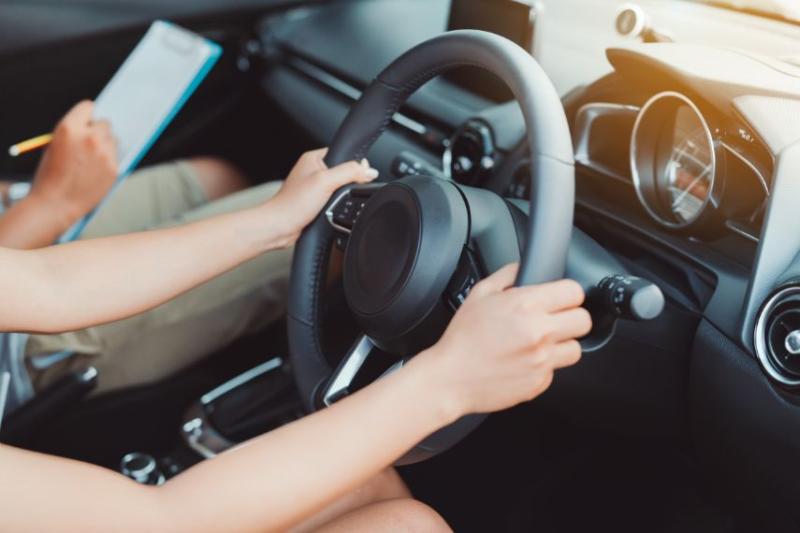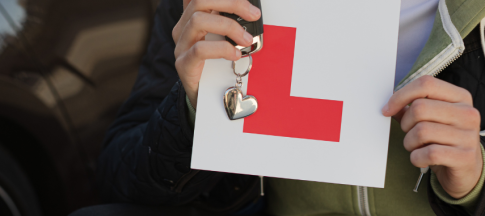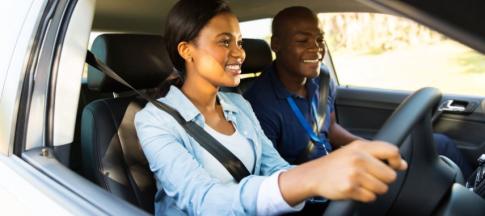
Learning to drive can be daunting. We’ve put together a useful learner driver guide for everything you need to know about how to prepare, driving lessons and some things to remember.
How do I apply for a provisional license?
The first step is to get a provisional license.
You can apply when you’re 15 years and nine months old, but you’ll only be able to get behind the wheel when you’re 17.
Before you apply, you must be able to read a number plate from 20 metres away.
You can apply for a provisional license online, which currently costs £34. If you want to apply by post, it currently costs £43.
If you don’t live permanently in the UK, you need to make sure you’ve been given permission to live here for at least 185 days if you want to apply for a provisional licence.
Rules for learner drivers
There are some rules to think about as a learner driver.
Do I have to have L plates?
You must have L (Learner) plates on display at the front and back of the car you're learning in.
If you’re learning in Wales, you can display D or L plates – either are fine.
You can get up to six penalty points on your licence if you're caught driving without the right plates, or if they’re the wrong size.
Read our guide on L and P plates.
Can learners drive at night?
Yes. Learners can drive at night, though this can be more dangerous than driving in the day.
So long as you have your instructor with you, you can drive at nighttime, but be extra careful and remember:
- always have your headlights on
- use fog lights if visibility is very low
- drive a little slower
Can learner drivers carry passengers?
You’ll always have one passenger with you while learning to drive: your instructor or supervisor. But what about other passengers?
You can carry passengers as a learner driver, so long as each person has their own seat and seatbelt.
If you do have passengers, it’s worth telling them not to distract you or your instructor while you’re driving.
What’s the best car for a learner?
You’ll often see learners driving smaller, less powerful cars, like the Fiat 500, Mini One or Vauxhall Corsa.
Smaller cars with smaller engines are a popular option for learners as they’re not too difficult to handle and are often cheaper than SUVs and 4x4s.
Check out our guide on the cheapest learner cars to insure with us if you haven’t decided on the right car for you yet.
Keep in mind that some insurers won’t cover you as a learner if you’re driving a car with a large engine.
Who can teach you to drive?
You must be accompanied by a driving instructor, family member or friend who:
- is over 21 years old
- is qualified to drive the type of vehicle you're learning in
- has held a full driving licence for at least three years
Read our guide for more information on supervising a learner driver.
Rules for driving with a learner
Whoever your instructor is – whether they’re a friend or formal teacher – they must not be on their phone or otherwise distracted while supervising you in the car. The supervisor or instructor also needs to be sober while in the car with the learner.
Can I drive on the motorway as a learner?
If you’re with a qualified instructor, it’s legal to drive on a motorway as a learner driver. But your instructor likely won’t take you on motorways because it’s quite dangerous for a learner, especially with multiple lanes and high speeds.
It’s illegal to drive on the motorway as a learner without an instructor. So, even if your driving supervisor has years of driving experience, they can’t take you on a motorway unless they have driving instruction qualification.
Driving lessons
On average, learner drivers need around 45 hours of lessons with an instructor, as well as 20 hours of practice.
It’s important to find an instructor who’s the right fit for you. Think about asking for recommendations from friends and family, as well as doing your research online.
How much do driving lessons cost?
Driving lessons can cost roughly between £30 and £50 per hour, depending on:
- where you are
- which instructor you go with
- whether you’re learning in a manual or automatic vehicle
When you consider how many lessons you may need to pass, this can easily add up.
Some instructors offer blocks of lessons for discounted prices.
On the other hand, some people choose to get in extra practise with their parents to help reduce the cost of driving lessons.
Intensive driving courses
You can choose to do an intensive driving course, which is when you do all your lessons over the course of a week or fortnight.
If you have the funds to pay in one lump sum, it will often end up cheaper than paying individually over a longer period of time.
They can cost anything from around £200 to £2,000.
However, you need to be ready to commit to a huge amount of driving in a very short period.
Should I learn to drive automatic or manual?
There are a few things to consider when deciding whether to learn to drive automatic or manual cars.
Learning to drive in a manual car takes longer, as you need to learn clutch control and shifting gears.
This means it could cost you more in lessons, but automatic lessons are often more expensive, so you need to weigh up the costs before deciding.
It’s also worth noting that if you get an automatic license, you’ll only be able to drive automatic cars – but a manual license means you can drive both manual and automatic cars.
For anyone with limited mobility or a disability, an automatic vehicle could be better to learn in as they’re easier to control.
It's all up to your personal circumstances and finances.
Getting insured
The insurance you need depends on whether you have your own car already, or if you’re learning in a friend or family member’s car.
If you’re learning in your own car
If you're lucky enough to already have your own car, then you'll need your own car insurance for that vehicle.
On the plus side, you'll start building up your own no claims bonus right away, which could help you get cheaper cover.
While you're learning, it would be a good idea to add a parent onto your policy as a named driver so they can drive your car if they ever need to during one of your lessons.
It's important you don't put them as the main driver if this isn't true - this is called fronting and it's against the law.
For more information and resources on learning to drive, head to the GOV.UK webpage.


